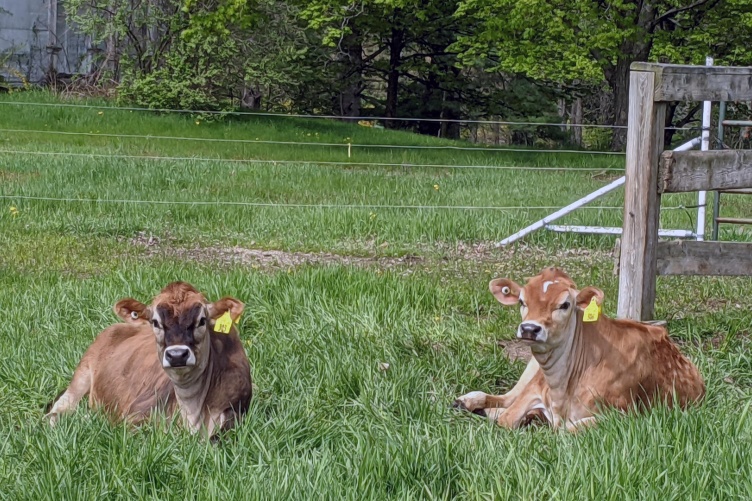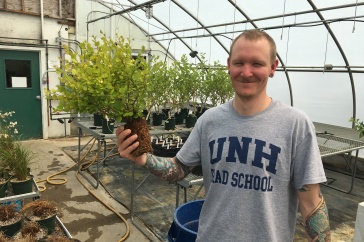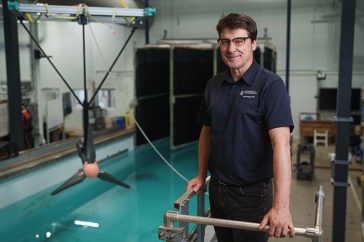
While extensive mastitis research exists, there is limited data regarding the whole genomes of pathogens that cause the infections, and thus large gaps in our understanding of the bacteria and how or why they lead to the disease.
Mastitis, which is an infection of the milk-producing mammary gland, is one of the most prevalent and costly diseases in dairy cattle, with an estimated worldwide cost of an average of $2 billion a year. Even with this major cost, there is limited information about the genetic makeup of the bacteria that cause mastitis.
Researchers at the New Hampshire Veterinary Diagnostic Laboratory at the University of New Hampshire in collaboration with colleagues at Cornell University have received a four-year $650,000 grant from the USDA National Institute of Food and Agriculture (NIFA) to conduct genetic analysis and research to unravel how these bacteria cause these costly infections. The grant is part of the federal agency's $14 million research investment to protect agricultural animals from disease.
“Animal health is critically important to farmers and ranchers,” NIFA Director Carrie Castille said. “This research will help better understand, diagnose, control and prevent diseases in agricultural animals.”
Senior veterinary pathologist David Needle said scientists noted a distinct difference in the types of bacteria causing mammary gland infections on conventional versus organic dairies. A specific set of bacteria were identified in 3% to 5% of mastitis infections found on organic farms, but in 35% to 45% of mastitis infections found on conventional farms. These findings are consistent over years and across state boundaries, and Needle and his collaborators at UNH and Cornell theorize that there may be a relationship between the prevalence of mastitis-causing bacteria and the differences in the environmental microbiome of conventional and organic dairies.
Needle and collaborators NHVDL managing director Robert Gibson, the UNH Hubbard Center for Genome Studies, and Laura Goodman, Michael Stanhope and Paolo Moroni from Cornell, plan to genetically sequence bacteria from the milk cultures from nearly 800 conventional and organic cows in New Hampshire, New York, and Vermont. These sequences will be paired with sequencing of barn floor environmental samples from participating farms.
While extensive mastitis research exists, there is limited data regarding the whole genomes of pathogens that cause the infections, and thus large gaps in our understanding of the bacteria and how or why they lead to the disease. The bacterial genomic information is basic to understanding the bacteria as pathogens – the ability of any single bacterium to cause disease or resist treatments is based on whether or not that bacterium has specific genes that give them these capacities. These genetic differences may be related to differences in management and medical practices across dairy farms. If the researchers are able to identify correlations between management and medical practices and a more or less aggressive genetic makeup of the mastitis-causing bacteria, then there could be much more targeted and specific management and medical approaches developed to decrease the incidence and severity of mastitis.
“What we learn from this work could help producers and veterinarians decrease the incidence and severity of mastitis on both conventional and organic dairy farms, thus making healthier and more comfortable cows with increased milk quality and milk yield, and increased quality and length of life,” Needle said. “Our completed work also will improve our understanding of the evolution of bacteria on different farms and how these bacteria change to impact the health of lactating cows and the quality of their milk. In combination with results of a husbandry and medical care survey, our findings could lead to recommendations about farming practices that reduce mastitis-producing bacteria on farms.”
This material is based upon work supported by the NH Agricultural Experiment Station, through joint funding of the National Institute of Food and Agriculture, U.S. Department of Agriculture, under Agriculture and Food Research Initiative award number 1025988, and the state of New Hampshire.
Founded in 1887, the NH Agricultural Experiment Station at the UNH College of Life Sciences and Agriculture is UNH’s first research center and an elemental component of New Hampshire's land-grant university heritage and mission. We steward federal and state funding, including support from the USDA National Institute of Food and Agriculture, to provide unbiased and objective research concerning diverse aspects of sustainable agriculture and foods, aquaculture, forest management, and related wildlife, natural resources, and rural community topics. We maintain the Woodman and Kingman agronomy and horticultural research farms, the Macfarlane Research Greenhouses, the Fairchild Dairy Teaching and Research Center, and the Organic Dairy Research Farm. Additional properties also provide forage, forests, and woodlands in direct support to research, teaching, and outreach.
-
Written By:
Lori Tyler Gula, PhD | NH Agricultural Experiment Station | lori.gula@unh.edu | 603-862-1452



















































